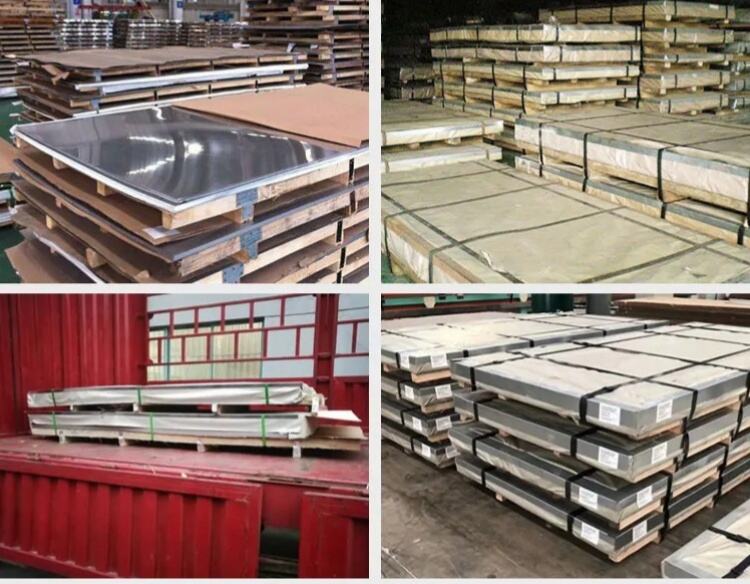Rostfritt stål har blitt det mest brukte materialet i flere industrier på grunn av dets fremragende korrosjonsmotstand, varighet og estetikk. Blant de mange typer rostfritt stål er 304 og 316 rostfritt stål de to mest brukte. Så hvordan velge mellom 304 rostfritt stål og 316 rostfritt stål? La oss ta en titt sammen!
Hva er stainlessstål?
Rostfritt stål er en familie av jernbaserte legeringer som inneholder minst 10,5 % krom. Tilsetningen av krom former et tynt, usynlig kromoksidfilm på overflaten av stålet, som beskytter det mot korrosjon. Denne passiveringsfilmen kan reparere seg selv. Selv om den skades, vil den reparere seg i tilstedeværelsen av oksygen.
Hva er klassifiseringene av rostfritt stål?
Rostfritt stål kan ofte deles inn i flere kategorier etter dens organisatoriske tilstand, inkludert austenitisk, ferritisk, martensitisk og duplex rostfritt stål. Blant disse er 304 og 316 rostfritt stål austenitiske rostfrie stål og de to mest brukte typene.
Egenskaper ved austenitisk rostfritt stål:
Austenitisk rostfritt stål har en sentrumstetraedersk krystallstruktur, er ikke-magnetisk ved romtemperatur, og har utmerket tørlighet og plastisitet. De kan kaltdrives for å øke deres styrke betydelig mens de beholdt høy tørlighet og korrosjonsmotstand. Dette type rostfritt stål viser utmerket korrosjonsmotstand i de fleste miljøer grunnet sin høye nikkel- og krominnhold.
Definisjon av 304 rostfritt stål og 316 rostfritt stål:
304 rustfritt stål:
304 ulikestettkjernet stål er det mest brukte austenittiske ulikestettkjernet stålet. Dets sammensetning inkluderer 18-20% krom og 8-10.5% nikkel, med mindre mengder av karbon, manganes, silisium og kvavling. Det høye innholdet av krom gir det god korrosjonsmotstand i oksiderende syremiljøer, mens nikkel forbedrer dets tøffhet og drakthet.
316 rustfritt stål:
Sammensetningen av 316 ulikestettkjernet stål er liknende til 304 ulikestettkjernet stål, men også litt forskjellig. Hovedforskjellen er tilleggingen av molybdenum. Tilleggingen av molybdenum forbedrer betydelig dets korrosjonsmotstand, spesielt i miljøer som inneholder klorider og syrer.
304 VS 316
Kjemisk sammensetning:
|
Kvalitet
|
C
|
Mn
|
Ja, det er det.
|
P
|
S
|
CR
|
mo
|
Ni
|
N
|
|
304
|
≤0.08
|
≤ 2,0
|
≤0.75
|
≤ 0,045,
|
≤0.030
|
18,0-20,0
|
-
|
8,0-10,5
|
≤0.10
|
|
316
|
≤0.08
|
≤ 2,0
|
≤0.75
|
≤ 0,045,
|
≤0.030
|
16.0-18.0
|
2,0-3,0
|
10.0-14.0
|
≤0.10
|
Mekaniske egenskaper:
|
Kvalitet
|
Strekkstyrke
(MPa)
|
Flytegrense
0,2% Bevis (MPa)
|
Elongasjon
(% i 50mm)
|
Hardhet
|
|
Rockwell B
(HR B)
|
Brinell
(HB)
|
|
304
|
515
|
205
|
40
|
92
|
201
|
|
316
|
515
|
205
|
40
|
95
|
217
|
Korrosjonsmotstand:
304 ulikestål har god korrosjonsmotstand i de fleste miljøer, men er oppgitt for pukkering i høy klorid- eller surmiljøer. I motsetning til dette inneholder 316 ulikestål molybdat, som kan motstå pukkering og sprangskorrosjon forårsaket av klorider bedre. Derfor er 316 ulikestål vanligvis en bedre valg i maritime miljøer eller kjemindustrien.
Søknad:
 304 ulikestål brukes hovedsakelig i disse områdene: matbearingsutstyr, husholdningsapparater, kjøkkenredskaper, bygganlegg, kjemiske beholder osv.
304 ulikestål brukes hovedsakelig i disse områdene: matbearingsutstyr, husholdningsapparater, kjøkkenredskaper, bygganlegg, kjemiske beholder osv.
 316 ulikestål brukes hovedsakelig i disse områdene: maritime miljøer, kjemisk behandling, medisinsk utstyr, legemiddelutstyr osv.
316 ulikestål brukes hovedsakelig i disse områdene: maritime miljøer, kjemisk behandling, medisinsk utstyr, legemiddelutstyr osv.
Kostnadsoverveielser:
Selv om 316-stålet er lite bedre i ytelse, er det relativt dyrt. Dette skyldes hovedsakelig at molybdænethetene i 316-stålet er relativt sjeldne, noe som fører til en økning i produksjonskostnadene. Derfor er 304-stål ofte mer populært i kostnadsfølsomme områder som husmøbler, byggedekoring osv. I profesjonelle områder med veldig høye krav til korrosjonsmotstand, som havbruksingeniørarbeid og kjemindustri, kan 316-stålet vinne plass gjennom sin fremragende ytelse.

I praktiske anvendelser kan velging av riktig type edeltstål ikke bare sikre materialets lange levetid og gode ytelse, men også optimere kostnadsnytte. Derfor må de spesifikke behovene og miljøbetingelsene for anvendelsen nøye analyseres i materialevalgsprosessen for å ta den mest passende beslutningen.
